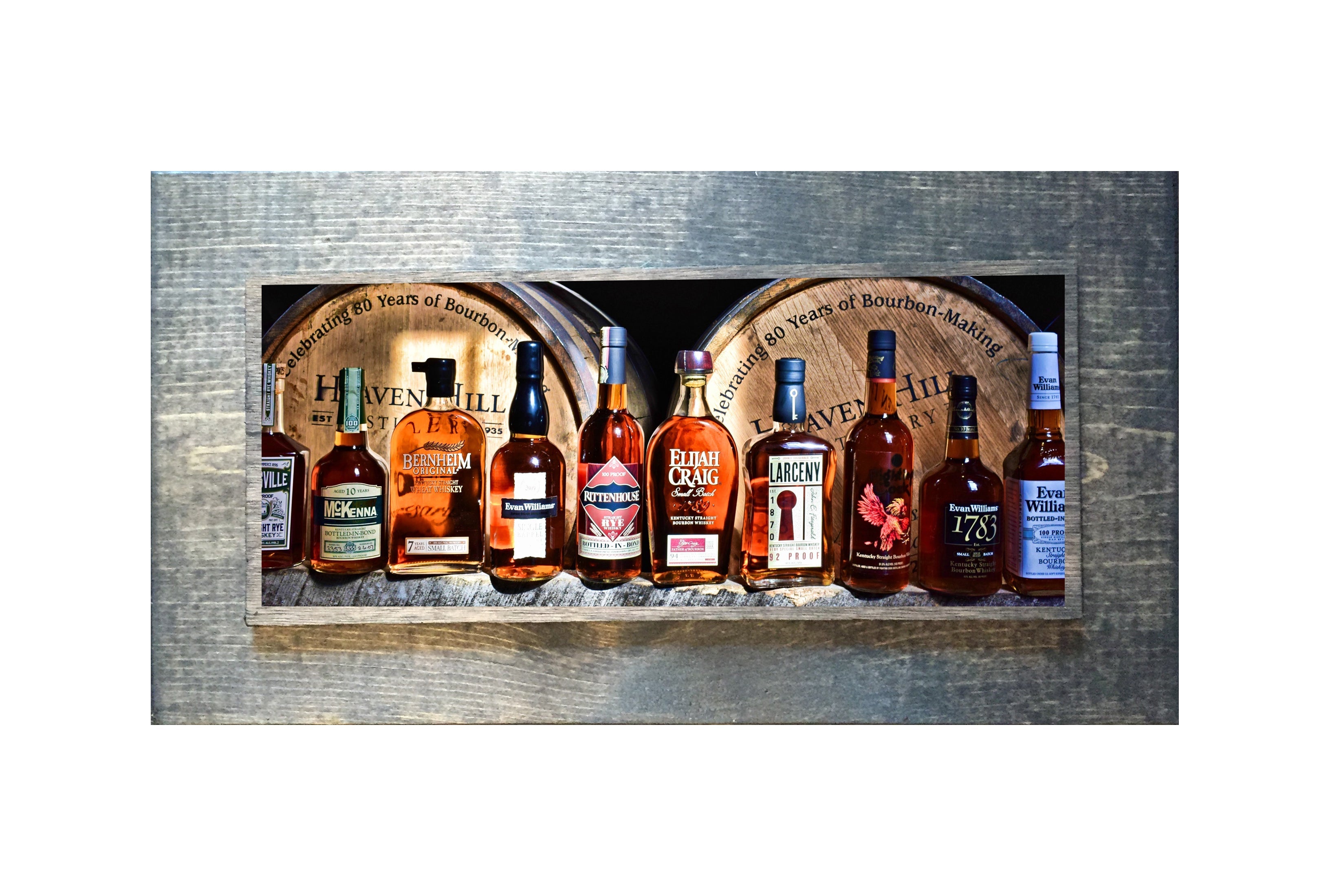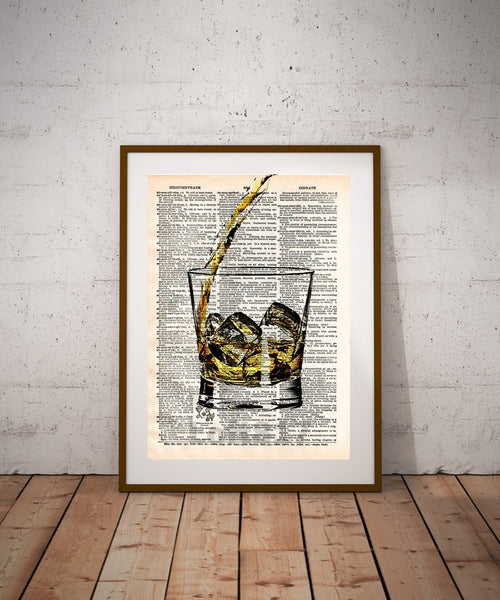Unveiling the Appeal of Bourbon Art: A Tribute to Craft Distillers
Unveiling the Appeal of Bourbon Art: A Tribute to Craft Distillers
Blog Article
The Relevance of Whiskey Art in Celebrating Heritage and Craftsmanship in the Beverage Sector
The elaborate connection between scotch art and the party of heritage and craftsmanship within the beverage market can not be overemphasized. Via attentively created tags and bottles, scotch brands envelop their historic roots and the artisanal skills that define their manufacturing approaches. This imaginative dimension not only improves market allure however additionally works as an avenue for cultural narration, cultivating a deeper connection in between the craft and the customer. As we explore the various elements of this subject, intriguing inquiries regarding the influence of modern fads on conventional practices occur, motivating additional evaluation.
The Historical Roots of Whiskey
At the heart of whiskey's appeal exists a rich tapestry of historic roots that map back to ancient civilizations. The origins of bourbon can be linked to the purification methods of the Sumerians and Babylonians around 2000 BCE, where early types of fermented grain drinks started to arise. It was in the Center Ages that the art of purification progressed substantially, specifically in Ireland and Scotland, leading to the development of bourbon as we understand it today.
The term "bourbon" itself originates from the Gaelic word "uisce beatha," suggesting "water of life." This phrase underscores the cultural value of whiskey in Celtic societies, where it was commonly related to rituals, celebrations, and public bonding. By the 15th century, distillation came to be an identified craft within monastic neighborhoods, leading the way for the facility of lawful distilleries.
As trade courses broadened, bourbon's appeal expanded, going beyond local borders and catching the passion of lovers worldwide. Realism Art. This historic trip shows not only the workmanship behind whiskey production but also its important duty in cultural and social contexts, noting it as a significant drink throughout background
Artistic Expression in Branding
Scotch branding stands as an engaging junction of creativity and commerce, where visual identity plays an essential role fit consumer assumption. The visual appeals of whiskey tags, packaging, and marketing materials mirror not just the brand name's story but additionally its core worths and heritage. Through artistic expression, distilleries share a narrative that resonates with customers, evoking feelings and stimulating links.
Making use of shade, typography, and images in branding serves to distinguish products in a saturated market. For instance, typical themes might stimulate a sense of authenticity and craftsmanship, while contemporary layouts can represent technology and forward-thinking. This calculated creative instructions enhances brand name acknowledgment and loyalty, enabling customers to build an individual relationship with the whiskey they choose.
Moreover, imaginative expression in branding frequently acts as an event of local heritage. Distilleries regularly incorporate regional signs or historical referrals into their layouts, creating a feeling of area that welcomes customers to take part in a broader social experience. Ultimately, the artistry behind scotch branding not only boosts aesthetic allure however also enhances the total narrative of the brand name, cultivating a deeper admiration for the craftsmanship top article and heritage ingrained in each bottle.
Workmanship in Container Layout
The creativity apparent in scotch branding prolongs beyond aesthetic identity to encompass the craftsmanship associated with container layout. Each bottle serves as a vessel not simply for the spirit within, however additionally for the tale anonymous it outlines its beginning, quality, and practice. The style process calls for thorough interest to information, as elements such as product, shape, and closure add substantially to the general assumption of the scotch.
Workmanship in container style entails selecting high-quality glass that can enhance the scotch's shade and quality, while likewise giving a tactile experience for the customer. The silhouette of the container need to be both functional and cosmetically attractive, frequently mirroring the heritage of the brand. Numerous distilleries go with special forms or printed logo designs that stimulate a feeling of authenticity and background.
Moreover, the tag design and typography play an essential duty in communicating the brand name's narrative. Limited Edition. A well-crafted bottle not only captivates the consumer's eye yet likewise reinforces the brand name's dedication to quality and custom. By doing this, the craftsmanship of bottle layout becomes an essential facet of the scotch experience, combining artistry with an extensive respect for heritage
Cultural Value of Bourbon Art
Commemorating practice and craftsmanship, the cultural relevance of bourbon art goes beyond simple looks, intertwining with the historical and social narratives of the areas where it stems. Each bottle functions as a canvas, depicting the one-of-a-kind tales, mythology, and customs that have formed local whiskey-making methods. The complex styles commonly reflect the heritage of the distillers, including icons and concepts that reverberate with the society and worths of their communities.

Furthermore, whiskey art plays a crucial role in public gatherings and celebrations, working as a concrete link in between individuals and their shared experiences. By appreciating the artistry in scotch packaging, customers grow a deeper understanding and regard for the craft, eventually enhancing their enjoyment of the drink itself.
Modern Trends in Bourbon Presentation
In recent times, the presentation of scotch has advanced to mirror modern preferences and trends while still honoring typical craftsmanship - Bourbon Art. Distilleries are increasingly concentrating on visual aspects that improve the general drinking experience, bridging the gap between heritage and modernity
Ingenious bottle designs have actually emerged, usually integrating sustainable products and imaginative tags that tell engaging tales. Many brand names currently collaborate with local musicians, instilling their items with special visual expressions that resonate with consumers. Furthermore, limited-edition launches are typically packaged in collectible containers, adding value and charm for lovers.

Conclusion
In verdict, whiskey art offers as a vital avenue for sharing the heritage and craftsmanship inherent in the drink industry. With detailed branding, innovative container designs, and culturally considerable imaginative components, scotch brand names properly honor their practices and attach with customers.


Craftsmanship in bottle design involves picking high-quality glass that can boost the scotch's shade and clearness, while likewise providing a responsive experience for the customer. In this way, the craftsmanship of bottle layout becomes an essential facet of the bourbon experience, merging virtuosity with a profound regard for heritage.
In final thought, bourbon art offers as a crucial avenue for revealing the heritage and workmanship intrinsic in the drink market.
Report this page